

20 14 26 31 Top Marketing Agency Metrics To Measure: Part II - Bastin Gerald, Profit.co Busting 7 Costly Urban Legends About Coaching Salespeople - Bill Bartlett, Sandler Action Outweighs Reaction - William A. Cohen, Institute of Leader Arts Don’t Forget What Got You To The Dance - Shep Hyken, Shepard Presentations DECEMBER 2022 • Vol.21 • No.12 SAleS PROFeSSIOnAlS: SAY GOODbYe TO The ‘lITTle PROFeSSOR’ At any given moment, we can choose what mindset we want to communicate from - David Mattson, CEO and President, Sandler (ISSN 2564-2057)


Articles 10 What Every CXO Needs To Know About Privacy How to prepare for the 2023 U.S. privacy laws
CEO, Boltive 18 Call Customers By Name Using a customer’s name adds a personal touch to your service
Tschohl, Founder and President, Service Quality Institute 24 Why It’s Time to Disrupt The Way Businesses Give Back In a world of stakeholder capitalism, stakeholder philanthropy is emerging -
Chief Impact Officer, Benevity 29 How Caring Leaders Nurture And Grow Collaboration Collaboration is much more than people working together -
President Limitless,
Clampitt, Professor, University
Bay 33 How Work Is Changing And How Leaders Must Change With It Three actions we need to see from our leaders - Amy
Vice
Performance Acceleration, The Marcus Buckingham Company Sales Professionals: Say Goodbye To The ‘little Professor’
given moment, we can choose what mindset we want to communicate from
07 On the Cover I n D e X HCM Sales, Marketing & Alliance Excellence DECEMBER 2022 Vol.21 No.12
- Dan Frechtling,
- John
Sona Khosla,
Bob DeKoch,
and Phil
of Wisconsin-Green
Leschke-Kahle,
President,
At any
- David Mattson, CEO and President, Sandler
( ISSN 2564-2057)
Top Marketing Agency Metrics To Measure:
Part II
5 metrics, their importance and how to calculate them

- Bastin Gerald, CEO and founder, Profit.co
Busting 7 Costly Urban Legends About Coaching Salespeople


Believing in ‘sales legends’ can end up being quite expensive

- Bill Bartlett, Vice President, Sandler
Action Outweighs Reaction
Exploring the concept of planned abandonment
- William A. Cohen, President, Institute of Leader Arts
Top Picks 14 20 26 31
Don’t Forget What Got You To The Dance
Whenever you make a change of any kind, consider the impact on the customer
- Shep Hyken, Chief Amazement Officer, Shepard Presentations
INDEX
HR.com makes HR Professionals smarter and we are sure your solutions do as well.
That being said, we understand how hard it is to market in the Human Capital space, get the attention of your target audience and show HR departments that you are a valuable resource. So, how do you overcome this hurdle?
Easy. Work with HR.com.
With over 19 years experience working with HR solution providers, we give over 1,200,000 HR professionals access to the tools and resources they need to succeed. We work side-by-side with HR solution providers to help them generate sales leads, grow market share, build brand awareness and promote industry expertise.
Checkout our growing list of tools and resources our vendors can take advantage of to get noticed by HR professionals!
Research
Build your brand, content marketing strategies, and thought leadership with exclusive HR.com research. Choose between custom featured research or state-of-the-industry research sponsorship. With custom featured research, we work with you to develop research on the topic of your choice or align your brand with any of this year’s State of the Industry hot topics to highlight the latest HR trends. No matter which research strategy you choose, come away with your very own branded research report and infographic, establish yourself as an industry thought leader by presenting a webcast, get key insights from the opinions of highly qualified HR professionals, and maximize your ROI, and build a healthy sales funnel with over 1,000 qualified leads.
Managed Email Campaigns
Looking to expand your marketing reach? Build long-term customer loyalty? Generate high response rates? Drive website traffic? The value of HR.com’s opt-in direct email program allows you to do just that. Nurture potential buyers on a consistent basis through our managed campaign program. Deliver your message directly to HR decision makers’ inboxes. HR.com’s direct email lists are 100% optin, GDPR, CASL, and CAN-SPAM compliant and contain only the most exclusive names and companies in the human capital industry.
Online Advertising
HR Marketing Institute
The HR Marketing Institute (HRMI) is the ONLY community of Marketing Professionals in the Human Capital space dedicated exclusively to the issues and needs of the marketing professionals and their businesses. This is a community of Marketing professionals who dedicate their time to marketing in the Human Capital space and who support each other to make the right decisions so that your marketing initiatives deliver the impact you need to succeed. Membership includes networking with peers, face to face summits, webcasts, research and benchmarking tools.
Webcasts and Virtual Events
Thought Leadership, Lead Generation and Educational Content
HR.com’s Webcasts and Virtual Events are more than an exercise in brand awareness. They are a comprehensive and groundbreaking way of generating tangible sales leads, while showcasing you as an industry authority to a captive audience of clients, prospects and the entire HR.com global community, giving you a greater market reach. In addition, HR.com’s one-hour webcasts provide valuable education and certification credits for today’s forward-thinking HR professionals.
Onsite advertising is a great way to reinforce brand and profile new products associated with a product launch. HR.com offers a variety of online advertising solutions including banner ads and premier homepage positioning making it a cost-efficient option for maximum brand exposure.
Buyer’s Guide
Be the Answer to the Questions HR Decision Makers are Asking

The HR.com’s Buyer’s Guide is where HR departments from around the world turn first when they need products and services. Put your company at the top of their list and get listed with the resource that HR professionals and decision makers trust.
Excellence Publications
Interactive Targeted Learning ePublications Aimed at Reaching Your Core Audience
HR.com’s 12 targeted and focused monthly online publications provide an invaluable collection of high-quality HR content and experts’ solutions to our members. Ten of our publications now feature themed editions that focus on specific topics. Sponsorship of research reports and webcasts aligned with the themes are also available.
For more information phone: 1.877.472.6648 | email: sales@hr.com | www.HR.com
Exclusive HR.com research
Attn: HR Solution Providers! Our solutions will get you more clients, brand exposure, sales –and a marketing community too!
Editorial Purpose
Mcgrath Publisher, HR.com


busting 7 Costly Urban legends About Coaching Salespeople
When it comes to sales coaching, unfortunate misconceptions can circulate easily among sales leaders. These misconceptions are akin to “urban legends”. However, unlike the harmless, entertaining stories of, say, congregations of albino alligators roaming the subways of New York City, believing in sales legends can end up being quite expensive because they keep salespeople from performing at full capacity.
As we bid farewell to 2022, let us look at some of these ‘ sales legends’ and try to understand how many of these sales management myths about coaching have you bought into, and how many are causing your sales team to underperform.
Busting 7 Costly Urban Legends About Coaching Salespeople by Sandler’s Bill Bartlett will give you a run down on the ‘sales legends’ that you need to stop believing in as you go into 2023.
In Sales Professionals: Say Goodbye To The ‘Little Professor’, Sandler’s
David Mattson talks about the ‘Little Professor’, a salesperson’s talkative ego state that is in love with showing off just how much we know, and shares a powerful sequence of questions that will help them set it aside.
Institute of Leader Arts’ William A. Cohen, in his article Action Outweighs Reaction, explores the concept of planned abandonment, and Shepard Presentations’ Shep Hyken, in his article Don’t Forget What Got You To The Dance will tell us why it is critical to consider the impact on the customer whenever a business makes a change of any kind.
That is not all! We hope this edition of HCM Sales, Marketing &
,
Happy Reading!
help
Disclaimer: The views, information, or opinions expressed in the Excellence ePublications are solely those of the authors and do not necessarily represent those of HR.com and its employees. Under no circumstances shall HR.com or its partners or affiliates be responsible or liable for any indirect or incidental damages arising out of these opinions and content.
Deepa Damodaran Editor, HCM Sales, Marketing & Alliance Excellence
eDITOR’S nOT e
Debbie
Alliance Excellence
will
you achieve excellence in your sales and marketing efforts.
OR For Advertising Opportunities, email: sales@hr.com Copyright © 2022 HR.com. No part of this publication may be reproduced or transmitted in any form without written permission from the publisher. Quotations must be credited.
Our mission is to promote personal and professional development based on constructive values, sound ethics, and timeless principles.
Debbie McGrath CEO, HR.com - Publisher
Jeffers VP, Sales Sue Kelley Director (Product, Marketing, and Research) Babitha Balakrishnan and Deepa Damodaran Excellence Publications Managers and Editors
S Senior - Design and Layout HCM Sales, Marketing & Alliance Excellence Team Deepa Damodaran Editor Chinnavel Design and Layout (Digital Magazine) Chandra
Submissions & Correspondence Please send any correspondence, articles, letters to the editor, and requests to reprint, republish, or excerpt articles to ePubEditors@hr.com. For customer service, or information on products and services, call 1-877-472-6648 HCM Sales, Marketing & Alliance Excellence (ISSN 2564-2057) is published monthly by HR.com Limited, 56 Malone Road, Jacksons Point, Ontario L0E 1L0 Internet Address: www.hr.com Subscribe now for $99 / year And get this magazine delivered to your inbox every month Become a Member Today to get it FREE! SIGN UP Write to the Editor at ePubEditors@hr.com
Excellence Publications
Dawn
Deepak
Shekar Magazine (Online Version)
In a world of unparalleled challenges (global pandemic, racial injustice, political rivalry, digital 4.0, emotional malaise), uncertainty reigns. Finding opportunity in this context requires harnessing uncertainty and harnessing starts with reliable, valid, timely, and useful information. The Excellence publications are a superb source of such information. The authors provide insights with impact that will guide thought and action.
Dave Ulrich
Rensis
Likert
Professor, Ross School of Business, University of Michigan Partner, The RBL Group

Excellence publications are my ‘go-to’ resource for contemporary and actionable information to improve leadership, engagement, results, and retention. Each edition offers rich and diverse perspectives for improving the employee experience and the workplace in general.
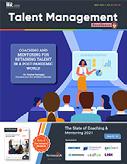
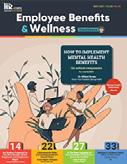



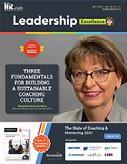
Julie Winkle Giulioni
Author, Virtual /Live Keynote Presenter, Inc.’s Top 100 Leadership Speakers

I regularly read and contribute to Leadership Excellence and Talent Management Excellence. I use many of the articles I read to augment my own presentations and I often share the articles with my clients. They are always quick, right on target for the latest issues in my field, and appreciated by my clients. If you want to stay up to date on the latest HR trends, choose a few of the different issues from the Excellence series of publications.



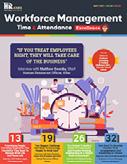

 Dr. beverly Kaye CEO, BevKaye&Co.
Dr. beverly Kaye CEO, BevKaye&Co.


We’re eager to hear your feedback on our magazines. Let us know your thoughts at ePubEditors@hr.com WHY EXCELLENCE PUBLICATIONS?
Sales Professionals: Say Goodbye To The ‘little Professor’
By David Mattson, Sandler
The most effective sales professionals, in our experience, are those who learn how to bid farewell to the ‘Little Professor’.
A little background. The Little Professor is that talkative ego state that is in love with showing off just how much we know. Think of it as a child trying to impress a teacher; it is all about gaining validation from someone else by proving how smart we are. The Little Professor is identified as an ego state in
Transactional Analysis, a long-standing and widely accepted psychoanalytic theory. Basically, when the Little Professor mindset is running the discussion, our ego has taken over.
At any given moment, we can choosewhat mindset we want to communicate from. Our experience, for over half a century now, has been that the most accomplished (and most productive) sales professionals are very good at choosing to step

Submit Your Articles HCM Sales, Marketing & Alliance Excellence presented by HR.com December 2022 7
At any given moment, we can choose what mindset we want to communicate from
COVeR ARTICle
away from the Little Professor mindset… so they can ask grownup questions. What do I mean by “grownup questions”? I mean questions that help buyers to reach their own conclusions. We can choose to ask these kinds of questions any time we want.

Making that choice consistently, day after day, hour after hour, is a crucial part of becoming a more effective salesperson because people love to buy –but they hate being sold. Buyers do not really care how much we know. They care about the problem or pain they face in their world. Our job is not to prove how much we know. Our job is simply to ask the questions that help them to connect their own dots, so they can decide if it makes sense to talk to us about making that problem go away.
If it does make sense, great. If not, no harm, no foul. We can always ask them for a referral – because this is a conversation between peers, not a petition to someone who is far above us on the food chain whose approval and validation we need.
Have you noticed that, when prospective buyers ask for advice, they tend to lean into recommendations
that confirm their own assumptions? That is only natural.
What we want to do is move beyond the urge to show off our product knowledge, and instead ask questions that point people toward the real-world dimensions of the problem they face. We want to support logical, caring conversations about any aspects of that problem they have not yet taken into account. The Little Professor, who is all about scoring points, is not great at that.
Once we step away from the Little Professor … once we remove our own ego from the discussion and let people come up with their own answers to questions that encourage them to think just a little bit deeper about their problem … we will find the game has changed. We are suddenly better positioned to facilitate a discussion about how they can get where they want to go.
If we tell someone they have an issue, they tend to deny or minimize the issue. On the other hand, if they say they have an issue, the issue is real for them. They stand behind what they have said and will invest the resources necessary to fix the problem. Their ears need to hear what they say, not what we say. If we say it, it’s suspect; if they say it, it’s true.
David Sandler, the founder of our company, shared a powerful sequence of questions that helps salespeople set aside the Little Professor. It’s as powerful today as it was when he first shared it. We call it the Pain Funnel. Take a look:
Notice that these kinds of questions are not the ones the Little Professor wants us to ask because they
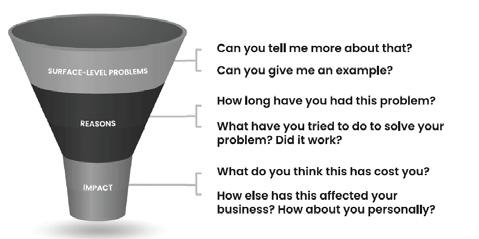
Submit Your Articles HCM Sales, Marketing & Alliance Excellence presented by HR.com December 2022 8
Sales Professionals: Say Goodbye To The ‘Little Professor’
aren’t designed to give us the opportunity to show off all the cool stuff we know. Using the Pain Funnel is how we say goodbye to the Little Professor.
It takes commitment and practice to learn to ask these kinds of questions. It takes an entirely different mental muscle to adopt the habit of treating the buyer with enough respect to ask intelligent questions, listen to the answers, and allow them to connect the dots. It is worth building up this muscle, however, because doing so is one of the best ways to set ourselves apart from the competition.
The Pain Funnel enables you to ask questions that truly engage the buyer. It gives you a holistic picture of the situation they face and their commitment to fixing it. The Pain Funnel is the opposite of what most salespeople do. Most salespeople, when they even bother to ask questions, put the Little Professor in charge! Their questions are typically not questions at all. They are excuses for the salesperson to talk, about all the reasons it makes sense to buy from them.
We’re talking about following a discovery process where we find out what the buyer thinks the problem is, what their budget is, and how they’re planning to decide to use that budget. Once we know all that, and not before, we can suggest a solution that solves the problem within that budget … and is consistent with their reasons for taking action. This strategy always beats the “data dump” approach.
As you start to use the Pain Funnel, you will think of yourself not as the star pupil in class but more as a qualified doctor examining a patient who may or may not have certain recognizable symptoms. A doctor has a duty to ask the patient good questions – and also to listen to the patient’s responses! Patients feel more comfortable when the doctor does that. They take those questions as evidence that the doctor understands them, the situation, is qualified to make a diagnosis, and can set up a course of treatment. If the doctor simply wrote out a prescription the minute the patient walked in the door, without asking any questions, that would be malpractice! Unfortunately, salespeople commit that kind of malpractice every day.
People don’t argue with their own data. If you expect to change a buyer’s behavior, you need to use their data – their conclusions – as leverage for that change. Asking good questions and listening to the answers.
Here are some simple steps you can take to make that outcome more likely.
● Identify three questions you can ask that will motivate your buyer to describe a) their problem from their perspective and b) the problem’s impact on them and their organization and/or ● team. (Notice that there are both personal and team impacts to any problem.)
● Practice getting your buyer to verbalize and validate both the pain and impact. Get them to talk about the problem. That’s what makes it real for them.
● When in doubt, repeat to yourself: “People don’t argue with their own data.”
● Personalize, and use, your Pain Funnel … and say goodbye to the Little Professor.
David H. Mattson is the CEO and President of Sandler. His new book is HOW TO SELL TO THE MODERN BUYER: 52 Sandler Rules For Sales Success.
Would you like to comment?
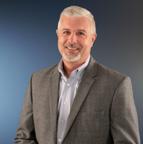
Submit Your Articles HCM Sales, Marketing & Alliance Excellence presented by HR.com December 2022 9
Sales Professionals: Say Goodbye To The ‘Little Professor’
What every CXO needs To Know About Privacy
how to prepare for the 2023 U.S. privacy laws
By Dan Frechtling, Boltive
The GDPR was a watershed moment for data privacy, but it was just the start of a broader effort to ensure that personal data is protected and used appropriately. New data privacy regulations are being introduced to the United States in 2023, and businesses need to prepare.

Securing your data privacy practices should now be a priority for all CXOs. Consumers know their rights, and in the age of social media, bad experiences spread like wildfire. Bad customer privacy experiences can cost trust, or worse, brand stability. More consumers “highly value” data privacy than sustainability or diversity and inclusion, according to a recent study.
new Privacy Regulations Are Coming in 2023
The arrival of the California Consumer Protection Act (CCPA) in 2018 gave consumers more control over what personal information is collected and how it should be used. Now, we have new U.S. privacy laws arriving in 2023 from Colorado, Virginia, Connecticut, and Utah, along with the updated California Privacy Regulation Act (CPRA), that echoes its predecessor.
All these regulations include provisions that allow consumers to control what data is shared with third parties. Specifically, users have the right to opt-out of sharing their personal information.
Multi-national beauty brand Sephora was fined $1.2 million by California authorities over allegations of severe CCPA violations. The investigation found that Sephora had been supplying user information (collected through tracking technology like cookies) to third-party advertisers, who used it to run retargeted ad campaigns without user consent.
The aim of these laws is to give consumers power over how their personal data is used. Not only are consumers annoyed by spam emails and ads that re-target them all over the internet, it can also be dangerous. For example, during the billions of digital
Submit Your Articles HCM Sales, Marketing & Alliance Excellence presented by HR.com December 2022 10
What Every CXO Needs To Know About Privacy
auctions that power programmatic advertising, bidstream data is being siphoned off and sold to anyone willing to pay for it, which poses a threat to national security
Why Is Data Privacy Important?
When you comply with the new data privacy laws in the U.S., you are telling your customers that you put their rights before your needs. This is a powerful stance that improves relationships, increases loyalty, and maintains your brand reputation.
This practice also improves spend efficiency. Advertisers routinely direct premium campaign spend toward online prospects, who have opted out of targeting. This segment is the least likely to respond. So, the same root cause that prevents privacy compliance also leads to wasted marketing expenses.
It is well known that it costs more to acquire new customers than to keep them. Misusing personal information, or not doing anything to protect the data you are trusted with, is likely to increase your churn rate and damage your bottom line.
Many Organizations Still Aren’t Ready
You might think accidentally incorrectly sharing consent does not cause any harm, but one small infraction can splinter and grow into something much more serious. Data leakage is a real problem because once the data leaves your hands (often unknowingly), you have no control over how it is used, or where it ends up.
Most businesses lack visibility to this threat, which can occur for a few reasons:
Incorrect or Misused Opt-out Methods
There are two clauses in the CCPA/CPRA that many businesses are not following, and legally should be, that aim to reduce data leakage. As the new state laws generally seek to be interoperable, they are likely to have many similarities, which means businesses need to stop making these mistakes. Businesses need to ensure they support two approved opt-out methods. In research conducted earlier this year, only 33 of the Fortune 100 Companies followed this rule.
bad Practices of Data Partners
A recent addition to the CCPA puts more responsibility on the enterprises that collect personal information to keep it safe. Previously, businesses could turn a blind eye, or use contract clauses to distance themselves from the illegal practices of their data partners.
To ensure everyone complies with the “spirit of the law”, businesses must now regularly audit their service providers’ and contractors’ procedures to ensure that the data they share is used in a lawful way. Firms may face investigation if a partner violates the CCPA and uses their data to do it.
Mishandling Consent
Sometimes, when a user gives their consent preferences, the signals to Consent Management Platforms (CMPs) fail, meaning consent is recorded incorrectly. Delivery signal errors occur for three main reasons, and most of the time it is completely unintentional.
Improper CMP integration with the publisher websiteSeveral publishers only conduct an initial assessment to ensure that their chosen CMP works with their platform. This approach ignores the fact that any changes or updates in the site can lead to changes in its underlying mechanisms, which can end up becoming incompatible with the CMP.
Using non-universally adopted methods - If a site uses methods that are not adopted throughout the digital ad ecosystem, signals can be dropped during the ad request. Examples include third party trade association tools, as indicated by the California Attorney General.
Code patches and other updates - Recent changes by vendors can accidentally break or cause downstream issues. These are called “dark signals,” or the disappearance of consumer consent choice by faulty technical handoffs. Simply put, whenever a platform is updated to improve functionality, it may be rendered incapable of proper signal reception.
The resulting violations are important to law enforcement, so monitoring these pitfalls is critical.
Submit Your Articles HCM Sales, Marketing & Alliance Excellence presented by HR.com December 2022 11
Here’s how you can prepare for the new data privacy laws in the U.S.
1. Revisit your opt-out strategy
This is the first thing you should do, and I recommend splitting it into two parts.
The first is to audit your data privacy policies to ensure they comply with the regulations. Make sure you have a minimum of two approved opt-out methods, and verify they are collecting, recording, and transmitting consent accurately.
Secondly, look at your consent procedures from the point of view of your customer. Complying with regulations is great but opting out should also be simple and transparent for the customer.
2. Review and regularly audit your data partners
It is not enough to safeguard your data in-house, you need to track it downstream. As mentioned, you must audit your data partners to protect your customers’ personal information and your business.
Software is available to run smoke tests of internet pipes to anticipate leaks and dark signals. Technology can even act as “secret shoppers” for privacy compliance. This saves the time and trouble of manual investigation.
3. encourage communication and knowledge sharing
To err is human. People make mistakes, such as forgetting to sever a link with an old data partner or placing digital objects on web pages without proper governance. These can be prevented with processes and training. For example, marketing and legal teams can direct IT on how to compliantly configure web technologies.
As the CXO, your role is to ensure everyone in your organization is on the same page when it comes to customer experience and keeping personal data secure is part of that. Encourage free-flowing communication around this topic, and do not store knowledge in a silo.
4. Put everything in writing
If you have not already, document your privacy program. And if you have, review it to make sure it is up to date. Come up with data-backed, well-thought, through, privacy strategies, and share this document with staff, partners, and stakeholders to improve alignment and drive business results.
Build your reputation and stronger consumer relationships with your data privacy policies.
According to the 2022 Adobe Trust Report, 68% of customers will stop buying from companies if their data preferences are disrespected. These laws are not here to harm businesses; they are a response to protect consumers.
Customer safety and satisfaction are already at the heart of decision-making for businesses throughout the U.S. Therefore, I urge you to think about these changes as a positive opportunity. Firms in technology, banking, and retail are getting an early start to position themselves as consumer protection leaders in their categories.
Dan Frechtling is CEO of Boltive. Dan has led B2B SaaS businesses since 1999. Prior to Ad Lightning, he was President of G2 Web Services, acquired by Verisk, where he expanded G2’s cyber security solutions to detect brand-damaging activity and transaction laundering. He was also GM/VP at Hibu, VP at Stamps.com and Sr. Associate for McKinsey. Would you like to comment?

Submit Your Articles HCM Sales, Marketing & Alliance Excellence presented by HR.com December 2022 12
What Every CXO Needs To Know About Privacy
Kindly let us know if you’d be interested to feature your article in our magazine by emailing the editor at ddamodaran@hr.com. You can also review our submission guidelines by clicking here
Also, if you are in marketing in the human capital space, we invite you to host a webcast for our HR Marketing Institute. For more details, please email Shelley Marsland-Beard at smarsland@hr.com
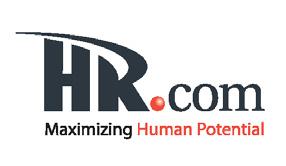

●
●
●
Marketing hacks for HR Solution Providers ● Building relationships with current and potential clients ● Tradeshow expo halls - best practices for ROI ● Branding and your online presence ● Aligning Marketing roles with your business growth strategy
Marketing Tactics to increase ROI
Martech Enablement ● Marketing Analytics ● How to define a “real lead” and how to count its sale value ● How to nurture stronger partnerships between marketing and sales ● Tips for working with influencers and analysts ● Market planning process ● How to build a brand ● How to win with PR ● How to use Social to drive brand recognition and sales ● Your approach to producing and disseminating meaningful thought leadership ● How marketing needs to evolve for success Our readers are interested in a number of topics including: Are you an expert in Marketing in the Human Capital space? If yes, you’re invited to submit articles for inclusion in our publication, HCM Sales, Marketing & Alliance Excellence! This publication helps Sales and Marketing professionals in the Human Capital space learn emerging trends to help them in their business and now you can share your marketing expertise with them! Check out our magazine here
Article submission deadline:
each
1 CALLING ALL HR MARKETING GURUS - SHARE YOUR EXPERTISE WITH OTHERS!
1st of
month
.
Top Marketing Agency Metrics To Measure: Part II
By Bastin Gerald, Profit.co
There are many marketing metrics that agencies should track in order to improve profitability. In the first part, we learned 4 metrics, their importance, and how to calculate the.
In the second part, we will learn the other 5 top marketing agency metrics one should measure.
1. Sales Qualified Leads (SQL)
Sales qualified leads are among the digital marketing measurement metrics that are crucial for your marketing agency. Sales qualified leads are similar to marketing qualified leads. However, unlike marketing qualified leads that merely show interest in your marketing communication, the brand and the products that you are marketing, sales qualified leads also show interest in purchasing the products.
By counting the sales qualified leads, you can:
● Identify potential leads who will soon make a purchase and convert
● Make accurate sales projections for the near future
● Verify the effectiveness of your lead generation activities
● Determine how many of the leads that your marketing efforts brought in are good enough to convert
● Decide whether you want to spend more or less to acquire these leads
Sales qualified leads - examples
A lead may be considered as a sales qualified lead when he/she:
● Adds products to the cart
● Interacts with your salespersons regarding the products and their features, offers, price, etc.
● Gets a quote and negotiates rates
● Requests a product trial/demo
Sales qualified leads can be identified by observing the customer journey, especially in the sales funnel.
2. Click Through Rate
Click through rate is one of the most indispensable digital advertising metrics for marketing agencies. When you run a targeted ad campaign or an email marketing campaign, the most crucial questions to ask are, whether they reached the right targeted
Submit Your Articles HCM Sales, Marketing & Alliance Excellence presented by HR.com December 2022 14
TOP PICK
5 metrics, their importance and how to calculate them
audience and whether they created the intended impact. Click through rate is one of the marketing metrics that helps you find answers for those aforementioned questions.
Click through rate is the percentage of clicks/actions that a digital ad or an email marketing campaign generated, against the number of target users it reached.
By calculating click through rate, you can:
● Measure the effectiveness of your campaigns
● Identify whether you have reached the right audience or not
● Determine whether your target audience finds the ad/communication relevant or not
● Monitor the performance of your digital ads and email marketing campaigns
● Make changes to your campaigns, change key message if needed, and fine tune your demographic reach based on their performance
You can calculate click through rate by dividing the number of times your digital ad was clicked by the number of times it was displayed.
For instance, if your digital ad was displayed 100 times to various individuals, and if it was clicked 2 times, then your
Click through rate = 2/100 x 100 = 2%
If you sent a marketing email to 1000 contacts, and if 50 of those contacts clicked the links you have provided in the email, then the click through rate of the email campaign is
50/1000 x 100 = 5%
3. net Promoter Score
The priorities of marketing include helping clients retain their end customers in the long run and providing a great brand experience to those customers so that they will be happy enough to spread the word positively about the brand. In the digital era, every customer’s experience matters, as it is easy for the customers to publicly review a brand, which can have a great impact on how your target audience as a whole perceives your brand.
Net promoter score is among those few digital marketing measurement metrics that measure customers’ perception of the brands that your marketing agency works with. Net promoter score

Submit Your Articles HCM Sales, Marketing & Alliance Excellence presented by HR.com December 2022 15 Top Marketing Agency Metrics To Measure: Part II
encompasses key parameters for maintaining brand value, such as customer loyalty, customer satisfaction, customer advocating for the brand, etc.
Net promoter score helps to:
● Identify what the customers think about a brand
● Determine the impact of your marketing efforts and the resulting customers’ perception of the brand
● Find out whether the brand is capable of retaining customers in the long term
● Tweak branding and marketing messages to make the client’s brand more appealing to their end customers.
You can measure net promoter score through surveys with a rating scale, filled by the end customers.
1. Customers who give a rating of 9 or 10 in the scale of 10, then they will be deemed as promoters; they are expected to remain loyal to the brand and spread the word about it positively.
2. Customers who give a rating of 7 or 8 will be seen as passives, i.e., the ones who neither have positive or negative things to say about your brand and will consider any competing brand. Since they do not have much impact on
the brand perception, they are usually left out of the NPS calculation.
3. Anyone who rates the brand below 7 will be considered as a detractor, i.e. dissatisfied with the company and its products, and may spread the word negatively.
In order to calculate net promoter score, you need to subtract the percentage of detractors from the percentage of promoters, discarding the percentage of passives.

For instance, if there are 90% promoters, 3% passives and 7% detractors amongst the respondents of the survey, then the net promoter score would be 90% - 7% = 83%.
4. Primary lead Sources
When you have an omni-channel marketing strategy, you have to be judicious about how much resources you spend for your marketing efforts through every channel. You can generate leads through various channels such as digital ads, organic search results, social media, etc. However, depending on the nature of the business and where your target audience mostly are, some sources may bring more leads than others. In that case, you may have to focus on that particular channel and find ways to optimize it.
Primary lead sources is one of the marketing metrics that enables you to identify the channel/source that brings you the most number of leads.
Submit Your Articles HCM Sales, Marketing & Alliance Excellence presented by HR.com December 2022 16
Top Marketing Agency Metrics To Measure: Part II
By identifying the primary lead sources, you can:
● Find out the channels that are most used by your target audiences
● Compare the budgets that you spend on different lead sources/channels
● Determine which channel is the most cost-effective in generating leads
● Optimize your marketing/lead generation strategy and focus on the sources that bring the greatest number of leads with the least amount of resources spent.
You can track primary lead sources by counting the number of leads that you get through every single channel/source.
5. engagement Rate
Engagement rate is one of the most important marketing KPIs for measuring the impact of your social media marketing initiatives. Social media plays an important role in promoting customer engagement. Engaging with customers and the target audience goes along in managing customer relations and creating a positive outlook for the brand. Measuring engagement rate helps to:
● Measure the engagement level of the followers of the brand on social media
● Understand what the target audience think about the brand
● Change the customer relationship strategy based on insights and improve engagement on social media
● Tweak brand messaging, and then find ways to make the brand more endearing to the target audience
You can calculate the engagement rate by dividing the number of actions taken by the followers, such as reacts to the post, comments, replies to others’ comments, queries, etc., by the number of followers, and multiplying the number by hundred.
For distance, if the social media account of your client brand has got 1000 actions from 2500 followers, then
Engagement rate = 1000/2500 x 100 = 40
Frequently Asked Questions
1. What are the KPIs for a marketing agency? Marketing KPIs are the quantitative measures with which marketing agencies track, measure, and analyze their business performance and the effectiveness of their marketing activities
2. how do you evaluate a marketing agency? You can evaluate a marketing agency by measuring various business, financial, and sales and marketing metrics periodically.
3. how do marketing agencies measure success? Marketing agencies measure their success by the performance of their financial KPIs and metrics related to the performance of their marketing campaigns.
4. What are examples of marketing metrics? Marketing Qualified leads, Cost per lead, customer lifetime value, click through rate, etc. Bastin Gerald is the CEO and founder of Profit.co Would you like to comment?

Submit Your Articles HCM Sales, Marketing & Alliance Excellence presented by HR.com December 2022 17
Top Marketing Agency Metrics To Measure: Part II
Call Customers by name
Using a customer’s name adds a personal touch to your service
By John Tschohl, Service Quality Institute
For most of us, one of the sweetest words we can hear is our name. When someone calls us by name, it connects us. That is true no matter the situation. It is especially true when we are making a purchase, whether it is a cup of coffee or a car. The price we are paying is incidental to the transaction.
Only a handful of U.S. companies, however, understand the power of calling customers by name. Three that come to mind are Amazon, Apple, and Delta Air Lines. There is no reason for other companies not to do so, too.

I have found that there are three reasons that employees do not use customers’ names. First is fear; they are afraid they will mispronounce the name. Second is indifference; they tell themselves that it is not important and that they are too busy to learn and use a customer’s name. Third, is a lack of training; they do not understand the importance of using customers’ names and do not have the tools they need to do so.
You can help them by training them and by including several role-playing scenarios in that training. When
Submit Your Articles HCM Sales, Marketing & Alliance Excellence presented by HR.com December 2022 18
meeting a customer for the first time, an employee should smile and introduce himself by saying, “Good, afternoon. I’m Charlie, and I’ll be helping you today. What is your name?” As Charlie goes on to talk with the customer, he should use the customer’s name during the conversation, which cements it in his mind.
If you are greeting a returning customer, whose name you remember, you can say, “It’s nice to see you again, John. What can I help you with today?” It’s also important to use customers’ names when they pay for their purchases. Most people pay with a credit card. Look at the name on that card, and then thank the customer. Say, “John, thanks for your patronage. I hope to see you again soon.”
When an employee greets loyal customers by using their names, it makes those customers feel valued and increases their loyalty to your business. It also differentiates your business from your competitors, something that is of increasing importance, especially given the state of our economy today.
Let us say you own a restaurant. It is not unusual to have at least 10 restaurants within a 1-mile radius, which means customers have several choices when dining out. Deciding factors for customers include the quality of your food, price, good service—and employees who address customers by name.
Much too often, customers feel as though they are just numbers. The last time you checked in for a flight with an airline, did the agent hand you your boarding pass and thank you by name? It is a simple thing to do since your name is clearly printed on your ticket. The same is true when you go through security at any airport. You are required to present your identification, yet no one calls you by name.
I’ve been flying around the world for business for more than 45 years—usually in business class—and spend approximately $200,000 a year for those flights. And yet I recall only four times that the lead flight attendant has called me my name, which is readily available by looking at the passenger manifest.
On the other hand, while flying from Germany to the United States on Delta Air Lines, the captain came out of the cockpit, stopped by my seat, addressed me by name, and chatted for a few minutes. It was the first— and only—time that has ever happened, and it made me feel important and valued.
Using a customer’s name adds a personal touch to the service you are providing. It gives you a competitive advantage—and it does not cost you anything. When you use customers’ names, you are showing respect and letting them know that you value them.

John Tschohl is the Founder and President of the Service Quality Institute. He is considered one of the world’s foremost authorities on all aspects of customer service and has developed 17 customer service training programs, including Speed, that are used by companies throughout the world.
Would you like to comment?

Submit Your Articles HCM Sales, Marketing & Alliance Excellence presented by HR.com December 2022 19 Call Customers By Name
busting 7 Costly Urban legends About Coaching Salespeople
believing in ‘sales legends’ can end up being quite expensive
By Bill Bartlett, Sandler
When it comes to sales coaching, unfortunate misconceptions can circulate very easily among sales leaders. I consider these misconceptions akin to “urban legends” – but unlike the harmless, entertaining stories of, say, congregations of albino alligators roaming the subways of New York City, believing in sales legends can end up being quite expensive because they keep salespeople from performing at full capacity.
How many of the following sales management myths about coaching have you bought into? How many are causing your sales team to underperform?
Myth #1: Coaching Means explaining, Demonstrating, and Reinforcing What to Do and how to Do it
When sales leaders do this, it is not coaching. It is training.
Training is important, of course, but it is not the same thing as effective sales coaching.
In order for sales coaching to be effective, the process must focus on critical behavioral change, not the imparting of new skills. The salesperson’s current level of effectiveness is always the starting point, as well as the benchmark for improvement over time. Many managers confuse coaching with training, and view the process as a way to “fix” issues negatively impacting the bottom line, often creating an environment that feels less than safe for the salesperson. (How do you feel when someone tries to “fix” you?)
Coaching, unlike training, is a way of empowering salespeople to use their existing skill set more effectively in the context of the sales process … and thus achieve greater success.
Myth #2: Coaching Can happen in a Group Setting
Barriers to sales performance are typically connected to an individual’s disempowering belief systems. Those beliefs do not change when you give the team a pep talk. Coaching is, at the end of the day, about helping the salesperson critically examine their own deeply-held beliefs and assumptions – the preconceived notions that are not serving them personally or professionally.
So: Would you discuss your personal “head trash” in front of your colleagues? Probably not. Add to this problem the reality that sales leaders may unwittingly make comments they imagine to be “coaching” during team meetings, comments that cause the individual salesperson to feel unsafe.
For example: “Didn’t you and I talk about doing X instead of Y?” This
Submit Your Articles HCM Sales, Marketing & Alliance Excellence presented by HR.com December 2022 20
Top Pick
kind of public critique may sound helpful at first, but in most cases, it only deepens a salesperson’s performance challenges when it is delivered in a public setting.
coming to you for the solution to every problem.
about the behaviors critical to success in certain selling situations, and their overall self-awareness during the sales process.
Myth
#3: Coaching Someone One-on-One Takes too much Time
Actually, what takes too much time is trying to change behavior by telling a group of salespeople what to do. Truly effective sales coaching delivers better results because it unfolds in private, in a space that the coach makes emotionally safe for the individual salesperson.
Coaching that delivers measurable results inevitably requires trust, confidentiality, and the willingness to share intimate personal information. Calling the team together for a “powwow” so you can share your personal list of best practices is not sales coaching.
However, whenever you lead a private, supportive discussion in which you ask questions that illuminate what is keeping a team member from achieving important personal goals, you are coaching. What you will discover once you start doing this on a regular basis is that these one-on-one sessions are among the very best time investments on your weekly calendar.
Why? Because you empower the salesperson to move beyond the cycle of learned helplessness – the cycle that keeps them
Myth #4: If Coaching on a Given Topic is Good for One Person on Your Team, it’s Going to be Good for everyone on Your Team because Your Salespeople All have
Pretty Much the Same Skill Sets
Your sales team is composed of individuals, each with distinct talents and unique obstacles. In order for your sales coaching to be truly effective, you must first seek to understand an individual salesperson’s current level of skill in a given area, and you must be willing and able to coach to that level of skill, not to a future or desired level of skill. When coaching efforts are unsuccessful, it’s usually because the coach has, for one reason or another, overlooked this principle. A common reason for overlooking it is the belief that everyone on the team, including new hires, is capable of “hitting the ground running” in essentially the same way. That is hardly ever the case.
Myth #6: That Which Gets Said Out loud During a Coaching Session – such as a Verbal Commitment to Future Action – Is What Matters Most
It is vitally important to understand the language of an effective coaching session. This language is expressed both verbally and nonverbally. The most effective coaches understand the nature of nonverbal messaging. They are good at reading body language and tonality to determine a given salesperson’s level of buy-in to the coaching process. Verbal commitments are important, yes, but if the person’s tonality and body language are sending you a different message, it is time to hit “pause” and figure out the underlying issue.
Myth
#5: Good Sales Coaching happens on the Fly. If You’re a Sales leader Who likes to Improvise, You Can “Wing it” and Get Good Results Coaching salespeople for improved performance always requires substantial up-front preparation. The session must be planned carefully, and it must begin with a clear understanding, on the coach’s part, of the individual salesperson’s current level of skill, their knowledge
Myth #7: The coaching Session Is Where I Get to Tell Them What happens next
As managers, we must understand that we cannot “sell” coaching to salespeople, who do not yet associate it with success. Nothing results in good from a coaching session in which the salesperson sits quietly and gets involved on an intellectual level, but has no emotional ownership of the process.
Coaching is most effective when an individual salesperson chooses to be vulnerable and
Submit Your Articles HCM Sales, Marketing & Alliance Excellence presented by HR.com December 2022 21
Busting 7 Costly Urban Legends About Coaching Salespeople
share the intimate experiences that are driving their current behavior. Once they realize that certain behaviors, if changed, will help them to improve and create even greater levels of success, they become equal partners in the coaching process. Not before! They must decide that such a partnership makes sense – not us. We cannot dictate their breakthroughs. We can only look for ways to support breakthroughs, by asking good questions and by supporting any and all decisions to critically assess the belief systems that are not serving the salesperson.
Trying to tell salespeople what needs to happen next for them to achieve a greater level of success, or indeed what constitutes success, will backfire. All of that is for the salesperson to decide.

These are the most common, and harmful, “urban legends” about
sales coaching that we hear from sales leaders around the world. Your organization cannot afford to buy into any of them. The human and financial cost of failing to debunk each of these myths is simply too high. The following true story proves that point.
Alex is a nine-year veteran salesperson, who has struggled throughout his career with strong-willed prospects who are eager to assume control of the sales process. This situation has left Alex largely ineffective in his sales role since he is only able to close the prospects, who create a friendly atmosphere and appear to like him. He feels he should take his time with these prospects, get to know them, and eventually reach a point where everyone feels comfortable agreeing to do business.
Around the office, Alex always appears to be busy, so his
manager Keiko is impressed with his work ethic. Yet Alex consistently fails to hit the modest performance targets he and Keiko have set together. Prospects always seem to show up in his weekly report with no resolution in sight. His deals are perpetually pending.
I could tell Keiko was frustrated with this pattern. She felt Alex could be her top performer if even half of his “perpetually pending” prospects ever closed.
Keiko’s assessment of the problem was a common one: She wanted me to “teach Alex to be a better closer.” It seemed obvious to Keiko that what Alex needed was a heaping extra helping of sales training.
I was not so sure. My analysis of the situation suggested that Alex had the skills and the knowledge necessary to close more
Submit Your Articles HCM Sales, Marketing & Alliance Excellence presented by HR.com December 2022 22 Busting 7 Costly Urban Legends About Coaching Salespeople
business. However, his inability to deal with difficult prospects prevented him from using these skills during his sales calls.
Alex saw any disagreement with a prospect as conflict – and shied away from that because it made him uncomfortable. Not only that, he shied away from perceived conflicts with Keiko for precisely the same reason. Yet, his relationship with his boss was growing more and more strained. Something had to give.
Some background is in order here. Alex is a middle child, who was brought up with a high need for approval. The problem was not that he had not been trained. The problem was his internalized beliefs were preventing him from using sales techniques that he thought might make his prospects not like him.
During our coaching sessions, Alex and I explored his “life script” – his habitual way of looking at
himself and the world – and the impact it was having on his selling success. Dealing with these unspoken issues helped Alex free himself from the thoughts and assumptions that were holding his performance hostage.
I used the doctor/patient analogy with Alex to help him see the real issue. If he were a doctor and a patient showed up in his office with back pain, he would not treat the back pain until he was sure of the cause – no matter how strong a personality the patient had.
Selling, I suggested, must be seen in the same light. You cannot prescribe a solution to a prospect’s problem until you understand the depth of the issue – no matter what aggressive traits the prospect may be portraying.

Once Alex got his heart into this analogy, his way of looking at his work changed. So did his behavior – his sales results – and his relationship with his manager.
Telling Alex “what to do and how to do it” didn’t solve the problem. Carefully planned and executed coaching sessions did.
Bill Bartlett, author of THE SALES COACH’S PLAYBOOK: Cracking The Performance Code, is the Executive Vice President of a Franchise at Sandler. An acclaimed coach and facilitator, who excels at identifying core challenges and implementing growth strategies that are transformative in their depth, Bartlett helps clients increase productivity and profit by developing high-performance behaviors, winning attitudes, and superior sales and management techniques. Would you like to comment?

Submit Your Articles HCM Sales, Marketing & Alliance Excellence presented by HR.com December 2022 23
Busting 7 Costly Urban Legends About Coaching Salespeople
Why It’s Time to Disrupt The Way businesses Give back
By Sona Khosla, Benevity
The global pandemic did what 60 years could not do – it changed CSR in the blink of an eye.
Up until 2020, most corporations made social investments the same way they had for six decades – executives, foundation boards and CSR leaders identifying a select few causes for the whole organization to support, while nonprofits navigated long and complex application processes in hopes of receiving a small portion of a company’s philanthropic budget.
Similarly, companies are running grant programs where many nonprofit applications are automatically turned down because they do not “fit” the company’s requirements. These decisions are often made without leveraging the knowledge or experience of nonprofits that are the experts on how to address the issues the company cares about.
In a world of stakeholder capitalism, the traditional system actively works against key CSR stakeholders.
2020 Changed everything
Within days of the onset of the Covid-19 crisis, many corporations dropped granting requirements, focused on accelerating the distribution of cash to nonprofits, and gave “unrestricted funds” at an unprecedented
rate, allowing nonprofits to use the funds in the way they thought best. Nonprofits rejoiced – finally, they could focus on the right kind of work!
The racial justice movement ensued and discussions about inequity in philanthropy came to the forefront. The voices of underrepresented and marginalized groups were starting to be heard and companies began assessing their grants with a “diversity lens”.
But despite the positive moment and even as the challenges of the past two-and-a-half years shone a light on brands to give more, do more and speak up on crucial social, environmental, and political issues, the majority of decision-makers were asking themselves if this was the future of philanthropy or just a crisis response.
It has become clear now, corporate philanthropy was due for a shakeup.
We’ve Officially Entered a New Era of Corporate Giving
Some of the world’s most forward-thinking brands are leading the way to the future with “stakeholder philanthropy,” pioneering innovative new approaches to corporate giving, weaving in principles of equity, trust, collaboration and stakeholder engagement.
Submit Your Articles HCM Sales, Marketing & Alliance Excellence presented by HR.com December 2022 24
In a world of stakeholder capitalism, stakeholder philanthropy is emerging
John Deere, for example, recently shifted their community investment focus to the United Nations Sustainable Development Goals (SDGs). That meant changing how they worked with nonprofits by streamlining the process and putting trust in nonprofits as the experts in serving their communities in support of SDGs such as quality education, zero hunger and no poverty.
“Who are we to tell the nonprofits precisely how to do it?” said Laura Eberlin, John Deere’s global program office, community integration.
Zoom works directly with community advisors, who have deep knowledge of the issues affecting their communities and stakeholders. Its grantmaking supports organizations under $5 million in size with multi-year grants, flexible funding, no applications and limited reporting requirements.
“By working with community advisors with deep issue understanding and lived experience, we believe that these experts know the solutions needed to enact change in their communities,” said Georgette Bhathena, Zoom’s senior program manager, social impact. “Our social impact efforts at Zoom could not be achieved without their help.”
Many companies are engaging stakeholders in new and brilliant ways – employees are nominating grantees, Employee resource groups are being provided with philanthropic funds to direct on the company’s behalf, and some companies, like
Starbucks, are engaging customers by offering them the opportunity to select the causes they want to support.
Engaging various stakeholders at all levels through these practices are what every nonprofit hoped would be part of the “new normal” of corporate funding coming out of the crisis. They democratize power and accelerate impact.
Social and business Impact Don’t have to be Trade-offs

Recent Benevity data shows that stakeholder philanthropy is also powerful in cultivating brand trust. Eighty-four percent of consumers and 85% of employees say the more a business engages its consumers and employees in its decisions on charitable giving, the more trust they would have in that business. Seventy-three percent of consumers said they would be more likely to use or shop with a business if it sought their input on the charitable causes they decide to support.
In a world of declining trust and increasing need, business executives should be paying attention. We are living in a brave, new engagement-driven world: people are demanding more from the companies they work for and buy from. They want more accountability, collaboration and impact.
Soon, stakeholder philanthropy won’t be a choice. It will be the status quo. It is just a matter of time.
Are you ready?
Sona Khosla is the Chief Impact Officer at Benevity and host of the Speaking of Purpose podcast.
Would you like to comment?

Submit Your Articles HCM Sales, Marketing & Alliance Excellence presented by HR.com December 2022 25
Why It’s Time to Disrupt The Way Businesses Give Back
Action Outweighs Reaction
exploring the concept of planned abandonment
By William A. Cohen, Institute of Leader Arts
In reviewing my notes from the time when I was Peter Drucker’s student, one of his requirements stands out. He invariably favored action over response to the actions of others. Sometimes, the action he advocated was difficult, untried, or had been unsuccessful when tried by others previously.

However, his success ratio was high, and he got spectacular results with this approach. He also noted that once someone accomplished anything difficult successfully, others were able to duplicate the same accomplishment, but did not necessarily receive the same benefits or acclaim.
For example, the first one to run a mile in four minutes or less was Englishman Roger Bannister in 1954. Prior to that many said it could not be done. This included doctors and exercise physiologists, many of whom had concluded that the human body just was not built to move that fast. Since Bannister broke the “four-minute barrier” running a mile in less than four minutes has been beaten by 1,663 athletes, including even high school students. Most received only modest acclaim for their achievement.
Another difficult physical event accomplished for the first time in those days was the successful climbing of Mount Everest. It was almost unimaginable to contemplate. Mount Everest’s isolated peak stood at 29,029 feet (8,849 meters) and is the highest point on earth. Although many attempted it, all failed, and some even died in the attempt.
So, it too was thought to be impossible to accomplish. More than half of this difficult task had to be done while inhaling oxygen. However, Everest was finally conquered by Edmund Hillary with his native guide, Tenzing Norgay in 1953. Hillary was knighted and he became Sir Edmund Hillary for his achievement. He said that to accomplish this extraordinary feat the main key was to overcome the uncertainty and fear in ourselves, not the actual event. Although still far from easy, since 1953, more than 2,000 climbers have climbed Everest successfully, but none are as well-known as Hillary.
This works for groups, too. The “Miracle on Ice” was an ice hockey game during the 1980 Winter Olympics between the United States and the Soviet Union. The Soviet Union was a four-time defending gold medalist, experienced, and heavily favored over a recently
Submit Your Articles HCM Sales, Marketing & Alliance Excellence presented by HR.com December 2022 26
Top Pick
recruited and unknown American team that had barely played together. Incredibly, the United States won 4–3! But one needn’t look that far back. A few days ago, the U.S. Men’s National Soccer Team advanced to Round 16 in the 2022 World Cup by beating the heavily favored and experienced Iran team by 1-0! It almost seems that sometimes to win, you need to be the predicted loser.
Bruce Rosenstein demonstrated Drucker’s unique use of the first action in his book, Create Your Future the Peter Drucker Way (McGraw-Hill, 2014). Creating the future is accomplished according to Rosenstein by developing and applying what he described as a forward-focused mindset, and Rosenstein explained how to do it.
That was Peter Drucker’s attitude, and you can find this at the core of many of his teachings. He maintained that the best way to predict the future is to create it. To his students, he added that “planning for an event, is only a statement of good intentions unless it immediately degenerates into the hard work of implementation.” He further explained that successful implementation was achieved primarily by leadership, and he also explained the difference between leadership and management. “Good leadership is doing the right things while good management is doing things right.” Even ten years after his death, Drucker is sometimes described as the greatest management thinker of the previous century, but Drucker focused even more passionately on the action part, that is, leadership, writing that 50 percent of the outcome of any endeavor is due to leadership, and explaining that “there is nothing so useless as doing efficiently that which should not be done at all.”
Drucker’s notion of Planned Abandonment
Drucker’s unique concept of planned abandonment by change managers confirmed that he meant what he said. With planned abandonment, a change manager intentionally abandons a profitable product or procedure and uses the resources, thereby, saving for developing and marketing a product or procedure which has greater potential.
“The successful change leader,” he insisted, “puts every product, every service, every process, every distribution channel, every customer and end-use, on trial for its life. And he does so on a regular schedule.” A most powerful example of this concept’s success was illustrated when Jack Welch, the new CEO of General Electric, hired Drucker as a management consultant.
On questioning, Welch told Drucker that there were a number of businesses of high potential that he would like to acquire but that GE did not currently have the resources or capability. Drucker looked over a list of profitable businesses that GE already owned. Drucker shook his head and said, “Too bad, if you abandoned a few of these you would have the money to invest in those of higher potential that you would like to acquire.
Welch agreed. “If so, what are you going to do about it?” Drucker asked immediately. Welch realized that Drucker was suggesting that he abandon profitable businesses. For the first time, Welch realized that he had immediate access to money and personnel resources to invest in the businesses of higher potential that he wanted. Abandoning older but still profitable businesses never occurred to him before.
Abandoning profitable businesses was not what MBA schools taught or investors wanted. Welch decided that if a GE business was not number one or two in its market, and it was unlikely to become such, he would close it or sell it even though it was profitable. This was a revolution in management thinking and clearly assumed the power of action over reaction.
Welch issued orders to abandon by selling or liquidation businesses that though profitable had no potential for becoming number one or two in their markets. He took a lot of criticism from his own managers as well as from outside experts and the business press when he gave these orders. But an unexpected phenomenon occurred as a result. The value of GE’s total holdings increased significantly.
When Welch retired nine years later, GE’s value had increased by an enormous 4000%! Experts, some of
Submit Your Articles HCM Sales, Marketing & Alliance Excellence presented by HR.com December 2022 27
Action Outweighs Reaction
whom had been strong critics of Welch previously now called him a management genius. When Welch retired, the GE Board awarded Welch the largest retirement package in history, while Fortune Magazine named him the manager of the century. Welch gave Drucker full credit.
Drucker explained to his students why his planned abandonment theory worked:
● Older profitable businesses required company resources in money, people, priorities, and just plain maintenance even though their potential was limited.
● Businesses with high potential helped to motivate employees to see, set, and reach higher goals that were formally thought impossible.
● Abandoning profitable businesses of lower potential and acquiring businesses that had significantly greater potential resulted in expansion and higher profits with less effort and fewer resources.
Initiating Actions in new Ways
Drucker observed that by initiating actions in unexpected ways, unexpected results benefiting the business might occur. For example, Drucker noted that Julius Rosenwald had built Sears Roebuck not only by satisfying his customers and innovation but by social responsibility, specifically his efforts at educating minorities. Drucker concluded that there was more to building a business than profit and that the notion that business should be measured based solely on the amount of profit obtained was in error.
He noted that society expected a business to contribute, and not only through taxes, but also through social responsibility to its employees and the public it served. While a business was expected to be profitable, it was also expected to make social contributions and that employees worked not only for pay, but also to be part of something that was bigger than themselves.
Consequently, while Drucker insisted on measurements and estimates to analyze every business endeavor, he was opposed to “quantitative
analysis for business decisions” if maximum profit was the sole focus and he shifted from the notion that management was a science with profit maximization as the major objective to management as a liberal art with the inclusion of measurement, and consideration of knowledge and actions in economics, ethics, history, humanities, philosophy, social sciences, physical sciences, and psychology – all liberal arts.
Maintenance of profitability was a necessity like oxygen in breathing, but not necessarily profit maximization.
Drucker insisted on action based on the total analysis of all aspects affecting and resulting from business. Those that followed his guidance found themselves profitable and successful in their occupations and those involved in them both in operations and as customers.
*Syndicated internationally
William A. Cohen was the first graduate of the Ph.D. program that Peter Drucker co-developed at what is now the Masatoshi Ito and Peter F. Drucker Graduate School of Management. After graduating and becoming Drucker’s friend, he applied Drucker’s methods and rose to become an Air Force general and the author of more than 50 management books published in 23 languages. He is the President of the Institute of Leader Arts. Cohen’s latest book is Peter Drucker on Consulting: How to Apply Drucker’s Principles for Business Success
Would you like to comment?

Submit Your Articles HCM Sales, Marketing & Alliance Excellence presented by HR.com December 2022 28
Action Outweighs Reaction
how Caring leaders nurture And Grow Collaboration

Collaboration is much more than people working together
By Bob DeKoch, Limitless, and Phil Clampitt, University of Wisconsin-Green Bay
Caring
leaders know that they can’t bark a drill sergeant’s “Collaborate now!” command. Rather, cultivating collaboration requires a mindset similar to a master gardener committed to blending the right soils, planting the right seeds, and nourishing growth.
First, they foster a commitment to collaboration. For some people, committing to collaboration is as natural as cooperating on family chores. For other people, collaborative opportunities resemble a dysfunctional family outing. For some hyper-competitive people, collaborative opportunities dissipate because their egos will not allow others to win. Professor Morten Hansen of INSEAD studied the challenge of collaboration and noted that these “lone stars” deliver on their numbers “big-time” but their “behaviors run counter to the teamwork that the firm is trying to install.”
Second, they ensure they have the right structural elements—or the right soil and seeds to cultivate growth. Structural elements include making sure the right people are in the room, securing proper meeting spaces, and creating compelling agendas.
Third, they build and use the right skills. Active listening and empathy are a must, but so are questionasking skills. Caring leaders ask the right questions at
the right time and avoid the desire to fill silence at the wrong time.
Caring leaders recognize that all three building blocks are necessary and self-reinforcing. For example, leaders with excellent collaborative skills but without the right people in the room will become frustrated with the results. Likewise, assembling the right people, who are not skilled, will be equally infuriating. Integrating these building blocks requires both the visible and subtle strategies discussed next.
Submit Your Articles HCM Sales, Marketing & Alliance Excellence presented by HR.com December 2022 29
Visible Practices for Collaboration
These visible strategies emerged from our observations and experiences about how to synergize the core building blocks of commitment, structure, and skill:
1. Make sure the right people are in the room and participating at the expected level. Most collaborative opportunities occur during meetings of various types.
2. Use personal instruction manuals to jump-start collaboration in newly formed groups When you buy a new product, you receive an operating manual with a list of dos and don’ts. Why aren’t people equipped with a similar manual? A personal instruction manual can fill this gap.
3. Assess meeting mechanics. Are meeting facilitators sending out agendas before meetings? Providing information before meetings? Sharing
meeting summaries? Routinely evaluating the effectiveness of the meeting? These questions represent the top complaints in many organizations.

4. Co-develop meeting ground rules with the team. Collaborative dynamics are acutely sensitive to the media used for communication—a successful TV advertisement may not play well in print or social media.
In the long run, caring leaders will be respected for their collaborative approach to problem-solving, even if they’re not successful in every case. They will also be appreciated for their decisiveness when collaborations fail. Collaboration is much more than people working together; it is building a sense of community with a group of people who respect and trust one another. They support each other and are able to disagree while finding a path forward. They recognize that, together, they find better solutions than anyone individually.
Bob DeKoch has over 40 years of executive leadership experience, which included 20 years leading The Boldt Company, a $1 billion construction services and real estate development company. Bob is currently the President of his own leadership consulting firm, Limitless,
Phil Clampitt is an award-winning communication and information science professor at the University of Wisconsin-Green Bay and has over 40 years of experience in university teaching, ground-breaking research, and business consulting.

They are co-authors of Leading with Care in a Tough World: Beyond Servant Leadership
Would you like to comment?
Submit Your Articles HCM Sales, Marketing & Alliance Excellence presented by HR.com December 2022 30
How Caring Leaders Nurture And Grow Collaboration
Don’t Forget What Got You To The Dance
Whenever you make a change of any kind, consider the impact on the customer
 By Shep Hyken, Shepard Presentations
By Shep Hyken, Shepard Presentations
A retail store changed its return policy. What was once considered a flexible, customer-friendly return policy became a hassle for the customer.
These changes are the reasons some customers shared when they were asked, “Why don’t you come back anymore?”
If any of these businesses had taken the time to ask their customers about the changes they were considering before making them, they would have realized that it would cost them business. They still might have decided to move forward with the decision, but at least they would have been prepared for their customers’ reactions.
I recently heard someone say, “Don’t forget what got you to the dance.” This was a derivative of the saying, “Don’t forget who brought you to the dance.” When you change who brought you to what got you, it takes on a different meaning.
Arestaurant took its most popular item off the menu. It had been on there a long time, and the owner decided it was time to make a change, even though it was his guests’ favorite dish.
A company changed its invoicing terms. It wanted to tighten its terms to get paid sooner, with larger penalties for late payment.
Referring to who brought you implies you should appreciate and remember who you are with, such as customers or employees who have supported you. When you refer to what got you, it means what we did to get someone to dance with us in the first place. The dance is the metaphor for your business, and what got them to the dance is why customers keep doing business with you.
The point of this is to think about changes you make that aren’t customer-focused. Any change, even if you
Submit Your Articles HCM Sales, Marketing & Alliance Excellence presented by HR.com December 2022 31
Top Pick
think the customer will like it, could be opposed and cause friction. For example, a software company made changes to its product that they thought the customer would like. They were wrong. Many customers complained, and some even left.

Contrast that with another software company that announced the changes it was making in advance. It promoted the benefits, and at the same time, warned that customers would have to relearn parts of the software. However, how they went about it made their customers excited about the change, regardless of the friction.
Whenever you make a change of any kind, consider the impact on the customer. Will they be happy, unhappy or will they even notice? You may still choose to make a change that negatively impacts the customer, but you’ll be prepared for the fallout. The point is to know and prepare appropriately. Remember what got you to the dance. Often, that’s why the customers continue to dance with you.
Shep Hyken is a Customer Service and Experience Expert and the Chief Amazement Officer at Shepard Presentations. He is a New York Times bestselling author and has been inducted into the National Speakers Association Hall of Fame for lifetime achievement in the speaking profession. Shep works with companies and organizations that want to build loyal relationships with their customers and employees.
Would you like to comment?

Submit Your Articles HCM Sales, Marketing & Alliance Excellence presented by HR.com December 2022 32
Forget What Got You To The Dance
Don’t
how Work Is Changing And how leaders Must Change With It

Three actions we need to see from our leaders
By Amy Leschke-Kahle, The Marcus Buckingham Company
Have you noticed how work is changing? The Covid-19 health crisis and ongoing digital transformation have combined to create a world of work that looks very different from the one in which we operated just a few years ago.
However, it’s important for all organization leaders to understand that we are not experiencing “a new normal,” but rather the evolution and culmination of a million different precursors into one big moment.
In other words, it’s not merely a swap of one world for another, but a progression that builds upon existing foundations. This point should guide how we lead our employees and change our business practices to overcome new sets of challenges.
Here are three actions we need to see from our leaders today as we navigate this acceleration of work and life
Submit Your Articles HCM Sales, Marketing & Alliance Excellence presented by HR.com December 2022 33
1. Reflect on Beliefs
Traditional behaviors have paved the way to success for many senior leaders in the past, but leaders today must understand how work is changing within their industry to succeed. This means taking ownership of mindset shifts and behavior changes that need to come from us as leaders but not necessarily from others within our organizations.
This kind of leadership requires more than re-tweeting the organization’s contribution to Black History Month or the #MeToo movement; it asks us to reflect on our beliefs and values to determine what applies today and what does not. In this way, we can transform our own abilities and potential for leadership while also modeling the best outlook and behavior for the employees and managers looking to us for guidance.
2. Find the Courage to lean into the Gray
Once we identify the shifts that need to occur in how we lead, we must find the courage to see those changes through, even in amorphous, undefined, gray areas of leadership. This is because the field of HR — which is often concerned with weighty issues like payroll, hiring, and risk mitigation — is evolving too
What used to be a straightforward role that focused on resources has blossomed into a more multifaceted position that concentrates on people, which could take us into some uncharted places as leaders.
Here’s an example: We’re all on board with supporting diversity, equity and inclusion in the workplace, but how do we actually achieve that? The answer must involve more than token support and nods of agreement. Taking the lead on these matters requires finding the courage to step into discussions and guide the business toward what is right, not just what we’ve always done or what our governing bodies tell us to do.
3. Focus on Systems Over Solutions
When you come up against an organizational challenge, the answer will not come from outside the organization. The latest vendor, author or report cannot guide what you as an HR leader need to do
next because these resources do not know your organization the way you do.
The answer is to go back to our roots as holistic, critical-systems thinkers. Leaders must look beyond relying on a single solution or platform and determine what their unique organization needs in its totality as an integrated ecosystem, not a to-do list with a series of isolated, one-off problems.
Are You Prepared for how Work is Changing?
Growing is rarely easy — for organizations, teams or leaders — but it is necessary, and it requires carefully considering the ways in which your leadership must evolve to match how work is changing.
Are you adapting your leadership mindset and style to the issues at hand? Can you find the courage to face resistance? Are you ready to chart a path for your organization’s future instead of relying on what outside forces tell you? Asking and answering these fundamental questions of leadership is a critical part of keeping yourself and your organization prepared for the challenges ahead.
This story was originally published on SPARK, a blog designed for you and your people by ADP®.

Amy Leschke-Kahle is the Vice President of Performance Acceleration at The Marcus Buckingham Company, an ADP Company, where she collaborates with clients to transform engagement, performance and leadership development based on the unique culture of each organization.
Would you like to comment?
Submit Your Articles HCM Sales, Marketing & Alliance Excellence presented by HR.com December 2022 34
How Work Is Changing And How Leaders Must Change With It

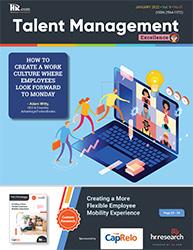
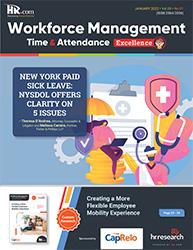




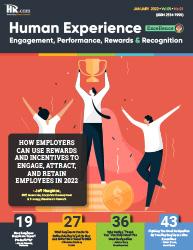



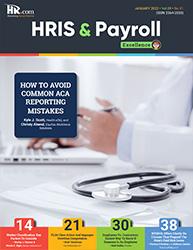

Like to submit an article? Use our online submission form or for more information go to www.hr.com/ExcellencePublications Publications 13 Targeted Publications to Reach Your Audience Informing, Educating, Enlightening and Assisting HR professionals in their personal and professional development, the Excellence series offers high-quality content through the publications!


For more information: Phone: 1.877.472.6648 | Email: ePubeditors@hr.com | www.HR.com/epubs HCM Sales Marketing & Alliance Excellence December 2022

























 Dr. beverly Kaye CEO, BevKaye&Co.
Dr. beverly Kaye CEO, BevKaye&Co.


























 By Shep Hyken, Shepard Presentations
By Shep Hyken, Shepard Presentations


















